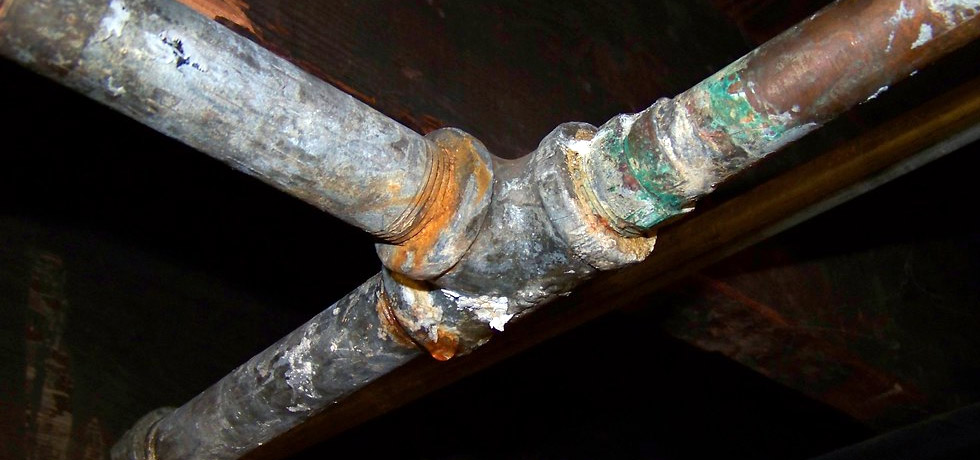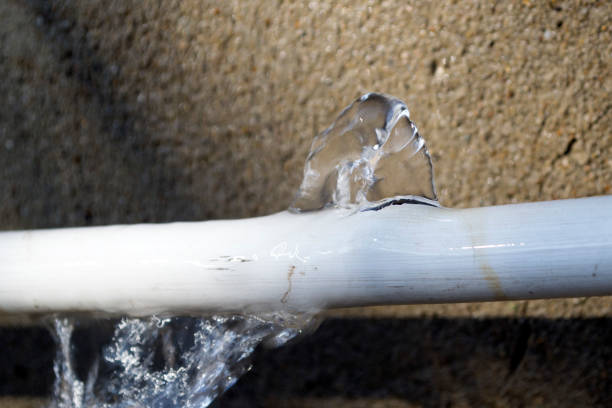Tackling Plumbing Problems in Older Homes: Important Guidance
Tackling Plumbing Problems in Older Homes: Important Guidance
Blog Article
The content underneath on the subject of Plumbing Issues in Older Properties and How to Fix Them is seriously engaging. Read it for yourself and figure out what you think of it.

Older homes commonly come with beauty, character, and background, yet they can likewise bring a host of plumbing problems. Whether you're handling maturing pipes, low tide pressure, or leakages, understanding how to attend to these common troubles is essential to maintaining a secure and functional home. In this overview, we'll explore the normal plumbing difficulties encountered by older homes and provide practical options to keep your plumbing in leading form.
Understanding Typical Plumbing Problems
Aging Pipelines
One of the most common problems in older homes is maturing pipes. Depending upon the period in which your home was built, the pipelines might be made from products that have actually weakened gradually, such as galvanized steel, cast iron, or even lead. These materials can rust, become breakable, or create leaks, causing water damages and potential health hazards.
Low Water Pressure
If you're experiencing low tide stress, maybe due to natural resources, deterioration inside the pipes, or old fixtures that are no more operating efficiently. This can be a major trouble, specifically in areas like showers and sinks.
Dripping Pipelines
Leakages are an additional frequent issue in older homes, commonly caused by corroded or worn-out pipes. Even little leakages can bring about significant water damage, mold growth, and boosted water costs otherwise resolved quickly.
Out-of-date Components
Out-of-date pipes components such as taps, toilets, and showerheads not only look old but might also be less efficient, prone to leaks, or incompatible with contemporary plumbing standards.
Pipe Corrosion
Corrosion is a common issue in older pipelines, especially those made from galvanized steel or actors iron. Rusty pipes can restrict water flow, trigger discoloration, and eventually lead to leaks or pipeline ruptureds.
Analyzing the Problem of Your Pipes
Evaluating Noticeable Pipes
Start by inspecting any visible pipelines in your house, such as those in cellars, crawl spaces, or under sinks. Try to find indications of corrosion, leakages, or corrosion, which can show underlying problems.
Checking for Leaks
Look for leakages by examining areas around faucets, commodes, and under sinks. You can additionally monitor your water meter before and after a duration of no water make use of to identify surprise leaks.
Water Quality Screening
Older pipelines can affect the quality of your water. Conduct a water quality examination to check for contaminants such as lead, corrosion, or various other pollutants that may be introduced by maturing pipes.
Solutions for Common Plumbing Concerns
Replacing Aging Pipelines
If your home has old, weakening pipes, think about replacing them with contemporary products like copper or PEX. This can be a significant financial investment, but it will stop future issues and enhance the safety and security and dependability of your pipes system.
Repairing Low Tide Pressure
To deal with low water stress, beginning by cleaning or changing old fixtures and eliminating mineral build-up in the pipes. If the issue lingers, it may be needed to replace areas of rusty pipes.
Repairing and Changing Dripping Pipes
For little leaks, you can utilize pipeline clamps or epoxy putty as a short-lived fix. Nevertheless, it's ideal to replace leaking pipelines entirely to prevent more damages.
Upgrading Fixtures
Updating old fixtures to modern, water-efficient designs can boost your home's pipes performance and decrease water usage. Look for fixtures with the WaterSense label for the very best performance.
Dealing with Pipe Rust
If your pipes are rusted, replacing them with corrosion-resistant materials like copper, PVC, or PEX is the very best remedy. Normal inspections and water quality upkeep can aid prevent even more rust.
When to Call an Expert
While some pipes concerns can be handled with DIY services, there are times when it's finest to contact an expert. If you're taking care of significant leakages, extensive corrosion, or are unsure about the condition of your pipes, a licensed plumbing can supply skilled analysis and repair service.
Preventive Upkeep Tips
Routine Evaluations
On a regular basis check your pipes system for indications of deterioration. Catching issues early can prevent costly repairs down the line.
Water Pressure Policy
Ensure your water stress is within the advised variety to prevent stressing your pipelines and fixtures. A plumber can mount a stress regulator if needed.
Water Top Quality Upkeep
Set up water filters or softeners if your water quality is poor. This can shield your pipelines and fixtures from damages brought on by difficult water or contaminants.
Proactive Pipeline Substitute
If your home has very old pipelines, think about proactive replacement before significant problems arise. This can conserve you from emergency repairs and water damages.
Verdict
Handling pipes problems in older homes requires a mix of vigilance, preventative upkeep, and timely upgrades. By recognizing the typical obstacles and understanding when to look for expert help, you can ensure your pipes system remains practical and dependable for several years to come.
Common Plumbing Problems in Older Homes
Older homes have a ton of character from the antique brass faucets, clawfoot tubs, and colorful tile to the Dutch doors, transom windows, and archways, there s a lot to love. Unfortunately, that character often includes old plumbing that s past its prime and isn t fit to support modern appliances.
If you own an older home and are suspicious about strange noises (ghosts?), smells, leaks, or frequent clogs in your plumbing, it's possible that your home s old age is to blame.
Learn more about the most common old house plumbing problems, and what can be done to fix them!
What Are the Most Common Plumbing Problems in Old Houses?
Old, corroded piping. Most older pipes are made of material that corrodes and rusts more easily. Even if over the years some of that piping was replaced with better material, the rest may be damaged or repaired with lower-quality material. Though expensive, it may be the best option to re-pipe your plumbing especially if there s rust or lead in your water. Slow drains. This could be the result of many issues, but most likely because of pipe bellies. These are sags in your drainpipes that happen as your home settles and shifts downward over time, putting pressure on your pipes and creating negative slopes. This can restrict water from flowing correctly through them and result in slow drains. Frequent clogging. As you might expect, pipe bellies can also lead to frequent clogging. Another reason for clogging could be due to buildup over time, or blockages from sediment and root growth. Scheduling a drain inspection and drain unclogging service can eliminate this issue. Damaged or failing sewer lines. Old homes are more likely to have foundational shifts and tree root overgrowth. This can put a lot of pressure on and in your sewer lines, leading to damage. Another common reason for failed sewer lines is because of modern appliance upgrades. Newer appliances put more strain on sewer lines, and if your old pipes aren t equipped to handle this, it can result in damage. If you have any wastewater backup, slow drains, or soft spots in your yard, you may need sewer line replacement. Worn or outdated fixtures. Plumbing fixtures old or new aren t built to last forever. Even if your fixtures seem like they re working well, it s best to check the wear on any internal parts. Minor wear and tear over time can lead to more costly leaks and plumbing issues. Our experts can perform a plumbing inspection for any part of your home s plumbing. Improper installations or repairs. Whether your plumbing was installed a hundred years ago, installed incorrectly, repaired incorrectly, or repaired with outdated materials, this can affect the long-term stability of your plumbing. In older homes especially, having your plumbing inspected is vital to preventing damage. What Are Old Plumbing Pipes Made Of?
Galvanized steel. Most often used between the 1930s and the 1980s, this piping material was discovered later in the 1990s to be prone to rust and corrosion, releasing lead into the water, which is dangerous to consume. Copper. Most homes built around the 1960s are likely to have copper piping. Unlike galvanized steel, copper is one of the most durable materials for plumbing pipes. The issue with this material is the risk of lead, which could be present in the piping itself or the solder applied to the joints and fittings. PVC. This material is still used today and was often used in older homes where piping was replaced because it was easy and inexpensive to install. PVC is also very durable, lead-free, resistant to rust and corrosion, and handles high water pressure well. The downside is that hot water can make it warp. How to Fix Plumbing Problems in Old Homes
Have your plumbing inspected. Before you begin or schedule any type of repair, schedule a plumbing inspection. An expert will be able to properly identify all the issues in your plumbing and the best solution to avoid further damage. Get your plumbing repaired or replaced as needed. Depending on the issues found with your plumbing, you may need minor repairs or larger replacements. Make sure these issues are addressed before you tackle any smaller issues. Remove any clogs or buildup. It s likely your old pipes are clogged with debris, mineral buildup, hair, tree roots, and more. Having your drainpipes cleaned will improve overall drainage and help prevent future leaks. Replace old fixtures. Before replacing any fixtures, check with your local plumber first. Not only can new fixtures strain your old plumbing pipes, but installing them incorrectly can lead to costly damage.

Do you like reading about Plumbing Issues in Older Properties and How to Fix Them? Give a review down the page. We would be happy to hear your views about this write up. We are looking forward that you come back again before long. In case you enjoyed reading our page please be sure to share it. Thanks a lot for being here. Revisit us soon.
Click Here Report this page